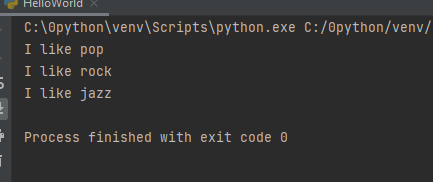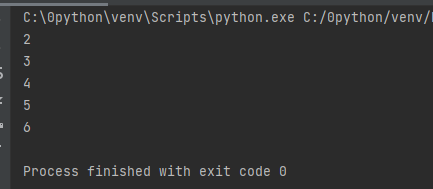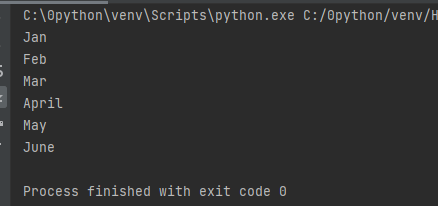在本文中,您将学习使用for循环的不同变体对元素序列进行迭代。
1. 什么是 Python 中的for循环?
Python 中的 for 循环用于迭代序列(列表、元组、字符串)或其他可迭代对象。在序列上进行迭代称为遍历。
1) for循环的语法
|
1 2 |
for val in sequence: Body of for |
在这里,val是在每次迭代中获取序列内项目值的变量。
循环继续,直到我们到达序列中的最后一项。 for循环的主体使用缩进与其余代码分开。
2) for循环流程图
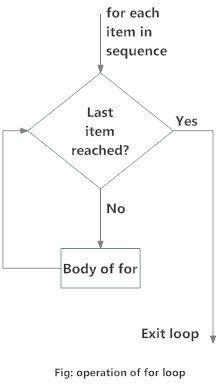
例1.1 Python for循环 – 打印出一个序列的和
# Program to find the sum of all numbers stored in a list
# List of numbers
numbers = [6, 5, 3, 8, 4, 2, 5, 4, 11]
# variable to store the sum
sum = 0
# iterate over the list
for val in numbers:
sum = sum+val
print("The sum is", sum)
结果
|
1 |
The sum is 48 |
3)range()函数
我们可以使用range()函数生成数字序列。range(10)将生成 0 到 9 之间的数字(10 个数字)。
我们还可以将开始,停止和步长定义为range(start, stop,step_size)。 如果未提供,则step_size默认为 1。
从某种意义上讲,range对象是“惰性”的,因为在创建它时,它不会生成它“包含”的每个数字。 但是,它不是迭代器,因为它支持in,len和__getitem__操作。
此函数不会将所有值存储在内存中; 这将是低效的。 因此它会记住开始,停止,步长并在旅途中生成下一个数字。
要强制此函数输出所有项目,我们可以使用函数list()。
以下示例将阐明这一点。
例1.2 range()函数的应用
print(range(10)) print(list(range(10))) print(list(range(2, 8))) print(list(range(2, 20, 3)))
结果
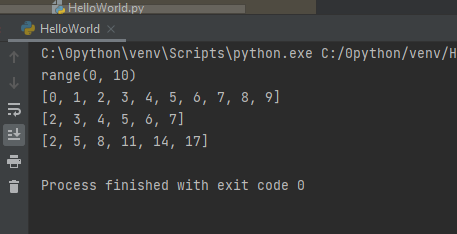
我们可以在for循环中使用range()函数来迭代数字序列。 它可以与len()函数结合使用索引来遍历序列。 这是一个例子。
例1.3 range()函数对字符串的应用
# Program to iterate through a list using indexing
genre = ['pop', 'rock', 'jazz']
# iterate over the list using index
for i in range(len(genre)):
print("I like", genre[i])
4.循环与else
for循环也可以具有可选的else块。 如果for循环的序列中的项目用尽,则会执行else部分。
break关键字可用于停止for循环。 在这种情况下,其他部分将被忽略。
因此,如果没有中断发生,则for循环的else部分将运行。
这是一个例子来说明这一点。
例1.4 打印序列中的数字
digits = [0, 1, 5]
for i in digits:
print(i)
else:
print("No items left.")
结果
|
1 2 3 4 |
0 1 5 No items left. |
在这里,for循环打印列表中的项目,直到循环用尽。 当for循环用完时,它将执行else中的代码块并打印。
仅当未执行break关键字时,此for...else语句才能与break关键字一起使用以运行else块。 让我们举个例子:
例1.5 检查学生分数
# program to display student's marks from record
student_name = 'Soyuj'
marks = {'James': 90, 'Jules': 55, 'Arthur': 77}
for student in marks:
if student == student_name:
print(marks[student])
break
else:
print('No entry with that name found.')
结果
|
1 |
No entry with that name found. |
2. 举例分析python for 循环
例2.1 – for 循环和
# #Example file for working with loops # x=0 #define a while loop # while(x <4): # print x # x = x+1 #Define a for loop for x in range(2,7): print(x)
结果
# #Example file for working with loops # x=2 #define a while loop while(x <7): print(x) x = x+1
例2.3 for循环在字符串的应用
#use a for loop over a collection Months = ["Jan","Feb","Mar","April","May","June"] for m in Months: print(m)
例2.4 for循环中利用break
|
1 2 3 4 |
# use the break and continue statements for x in range (10,20): if (x == 15): break print(x) |
结果
|
1 2 3 4 5 |
10 11 12 13 14 |
例2.4 for循环中利用continue
for x in range (10,20): if (x % 5 == 0) : continue print(x)
结果
|
1 2 3 4 5 6 7 8 |
11 12 13 14 16 17 18 19 |

